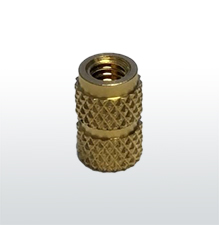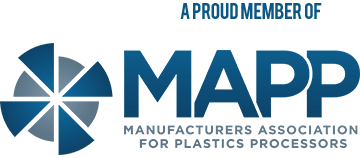Thermoset Molding with Inserts
By utilizing a molding process, OEMs and manufacturers are able to design parts into complex geometries to meet the needs of the end product. This design flexibility allows part designers to implement more features into a part design, consolidate multiple parts of an assembly, and reduce overall manufacturing costs for a product assembly. Along with the availability to design intricate and complex design geometries, manufacturers are also able to implement inserts into a molded part for a variety of reasons, most typically to use as a threaded fastener to join multiple parts of an assembly together. Inserts can be designed to be molded-in during the molding of the part, or they can be tapped and/or installed in a secondary operation after molding. Depending on the part and assembly requirements, each option has its own benefits and advantages. Below are two main types of inserts used within molded thermoset parts.
Molded-In Inserts
Molding in inserts within the molding cycle is an economical way to implement inserts as there is no secondary step required after the parts are molded. Molded in inserts will require an operator or end of arm tooling to install the inserts prior to molding each shot, however the resulting molded parts feature inserts that are bonded into the part, creating a stable fastener to assembly multiple parts of an assembly. The bonding is created during the molding cycle as the resin material encapsulates the outside of the insert, which are usually knurled, holding the insert in the correct position into the part.
Post-Tapped Inserts
Post-tapping inserts is a secondary operation performed after parts are already molded where threaded inserts are mechanically driven into a molded part. Self-tapping inserts are an excellent option for molded parts that require a stable consistent cycle time that cannot be affected by manually loading molded in inserts. Loading molded-in inserts at the press also keeps the mold open, which can cool the mold from normal processing temperatures, potentially resulting in more scrapped or rejected parts.






Comments are closed